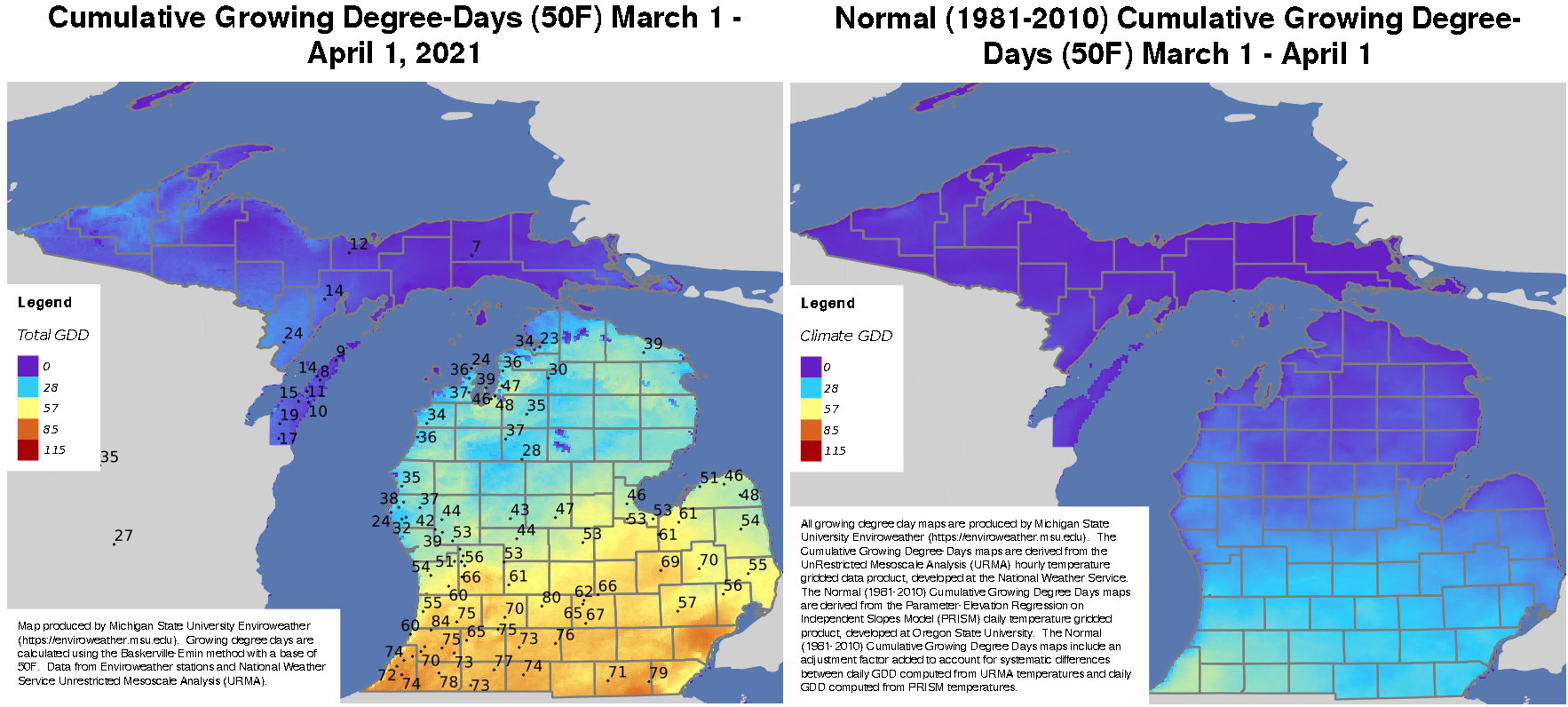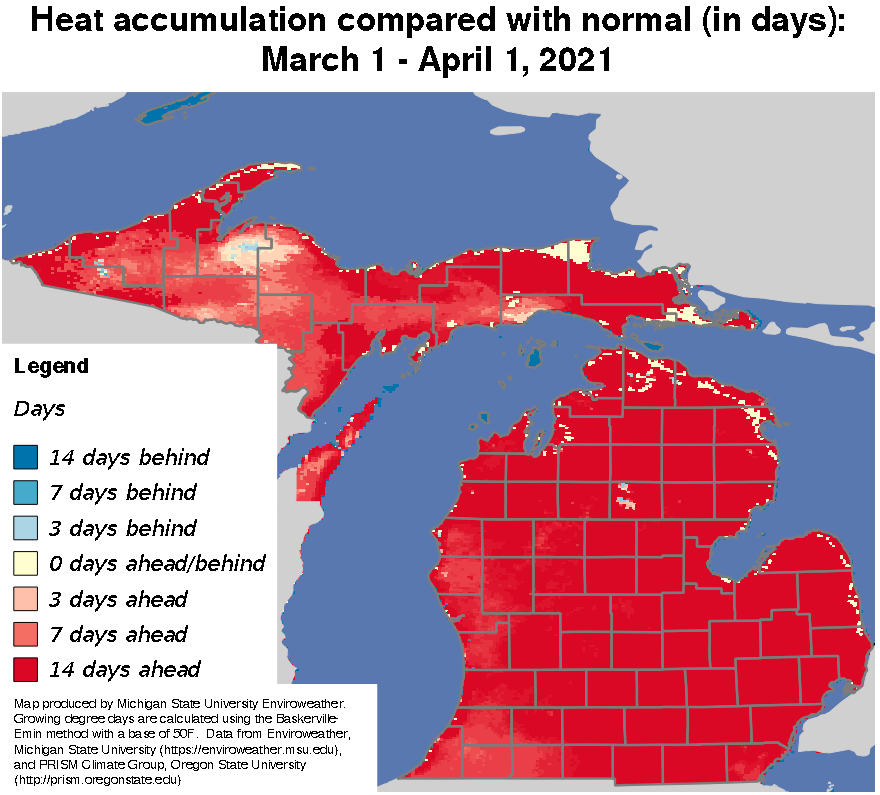Spring is early! Can I plant my garden now?
Compared with average temperatures, the spring of 2021 is two weeks ahead, which has a few implications for Michigan gardens.

Spring has sprung! The spring equinox, when the day length and night length are equal, was on March 20, 2021. However, in the landscape, spring is more than a date on the calendar. Like any season, it is a series of developments: the yellow witch hazels bloom, then the crocus, and the foliage of peonies emerges from the ground. These developments get every gardener excited and every gardener is thinking: can I plant my garden now?
Remember, the weather does not warm in a consistent pattern and some years warm weather arrives earlier on the calendar. We are fortunate to have many years of weather data collected that can be used to predict approximate windows when events (i.e., crabgrass germination, pest emergence, etc.) will occur, paying attention to biological cycles known as phenology, which can assist with decision-making in the garden.
How does the spring of 2021 compare with average so far? As of April 1, the growing degree days (GDD) in much of the state, especially in southern Michigan, are ahead of schedule (Figure 1). GDD is a value that is calculated based on the amount of heat accumulated over time based on a low temperature, such as 50 degrees Fahrenheit. These heat maps of Michigan represent GDD between 0 and 115 GDD. The warmer the color, the more heat has accumulated in the area.

So, how much heat has accumulated compared with normal?

The spring of 2021 is phenologically ahead of the average by more than two weeks, with the exception of a limited number of lakeshore areas. What does this mean for you? Can we plant early? While the warmer than normal spring may be generating spring fever to get out in the garden, seasoned Michiganders know that spring weather takes frequent detours into snow and frost. Michigan gardeners could begin planting some cool season annuals, such as pansies and snap dragon, but should be cautious of getting too ahead of themselves. The early spring does mean that the optimal window for crabgrass preemergent is earlier than average, but it’s still too early to put out your tomato seedlings.
Here are some additional implications of the early spring.
Oak pruning
In order to prevent the spread of oak wilt, a disease well established in Michigan that causes the rapid death of trees, Michigan State University Extension recommends not pruning oaks from mid-April to mid-July. Since we are approximately two weeks ahead of schedule developmentally in the landscape, should the pruning window for oaks close earlier? According to MSU forest entomology professor Deb Mccullough, the April 15 window for avoiding oak damage does have an approximate two-week buffer to accommodate early warm weather. However, “There are always microclimatic differences – a south-facing aspect warms faster than an east or north aspect, shoots on the top of a tree warm faster than shoots in the lower canopy and so forth,” she says.
If oak pruning is necessary, choose a certified arborist who understand the disease and pruning recommendations. They have the training to evaluate the situation in a particular location. You can find a certified arborist through the International Society of Arboriculture.
Crabgrass preemergent timing
Crabgrass is a summer annual weed that grows each year from seed. Crabgrass is controlled by applying preemergent herbicides that prevent germination. These are most effective when applied during spring while soil temperatures are between 50 and 55 F. This window will vary from year to year.
You can purchase a soil thermometer and monitor the soil in your lawn or you can also use the GDD Tracker. Enter your zip code to determine the effective application window for your area. Note that the application window is several weeks. For example, if you put in the zip code for Grand Rapids, Michigan, you’ll find that we are at 388 GDD base 32 F and the optimal time to apply crabgrass preemergent is between 200 and 500 GDD base 32 F.
Frost-free dates
While focusing on phenology can tell you about how plants are developing and the soil is warming, it can’t predict the future. Cold-sensitive plants like tomatoes, peppers and zinnias can be killed by freezing or near-freezing temperatures. Frost-free dates tell us when statistically we are least likely to have any days with temperatures that can kill cold-sensitive pants. Don’t get fooled by early spring weather and plant frost-sensitive vegetables or flowers before the frost-free date in your area. Cool-season flowers such as pansies, snapdragons, ranunculus and pericallis can tolerate frosts but gardeners should be weary of freezing temperatures.
Once your soil temperatures are at 50 F, consider planting cool season vegetables in your garden. Wait to plant warm season vegetables until past the frost-free dates when soil temperatures are above 70 F.
Happy gardening, Michigan!



 Print
Print Email
Email